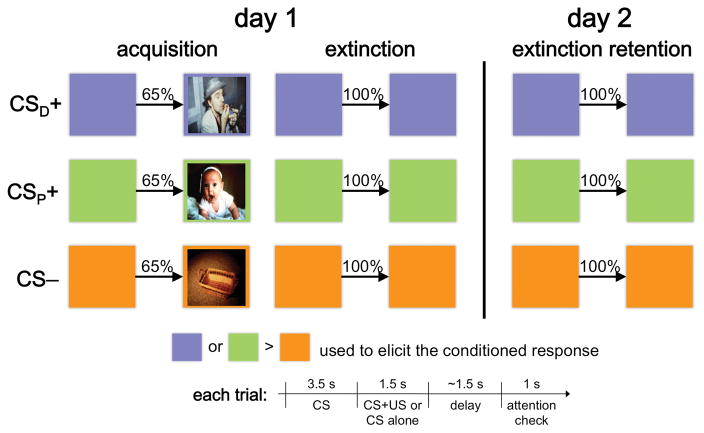Figure 1.
Study overview and conditioning paradigm. While in the MRI scanner and over the course of three scanning sessions, subjects learned to associate a cue (colored square), the CS, with a drug-related (CSD+), affectively pleasant (CSP+), or neutral (CS-) image. Following two reinforced presentations of the CS for each CS type (not shown), extinction training immediately followed acquisition, where the CS was presented repeatedly without the paired image. A second extinction training session took place 24 h later. A typical paired trial consisted of presentation of the CS for 3.5 s, followed by presentation of the US (the corresponding image) inside the CS for 1.5 s, a variable ~1.5 s fixation screen, and a 1 s screen requiring a non-contingent button press indicating whether the US appeared or not on that trial. Following another variable ~1.5 s fixation screen, the next trial began. Unpaired trials were identical to the paired trials with the exception that the CS remained on the screen for the entire 5 s.

